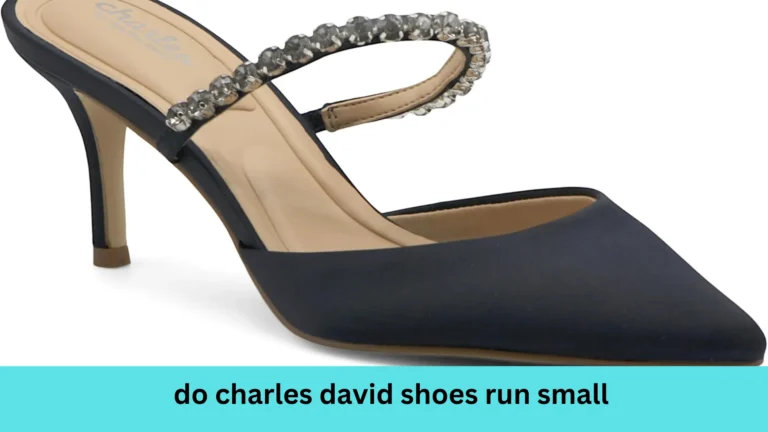
Yes, it is okay to wear running shoes for walking. Many people use their running shoes for walking because they are comfortable, well-cushioned, and offer support. However, while running shoes can work great for walking, there are a few things to consider before making them your go-to walking shoes.
What Makes Running Shoes Good for Walking?

Running shoes are designed with several key features that can be beneficial for walking:
- Cushioning: Running shoes offer ample cushioning to absorb shock during impact, which is great for both running and walking.
- Arch Support: Many running shoes come with built-in arch support, which can help distribute your weight evenly and prevent foot pain.
- Breathability: Running shoes are usually made with breathable materials that allow for good airflow, keeping your feet cool during long walks.
- Durability: Running shoes are often made with durable materials designed to withstand the repetitive motion of running, making them last longer even when used for walking.
What to Keep in Mind When Wearing Running Shoes for Walking?
While running shoes are great for walking, here are some points to keep in mind:
- Over-Designed for Walking: Some running shoes may be over-engineered for walking. Running shoes are often more structured and provide more support for the high impact of running, which may not be necessary for walking.
- Sole Wear Pattern: Running shoes are designed to support forward motion while walking involves more heel-to-toe movement. This difference may cause running shoes to wear out faster if used only for walking.
- Weight: Some running shoes, especially those designed for long-distance running, maybe slightly heavier than walking-specific shoes, which can lead to foot fatigue over long walks.
Are Walking Shoes Better Than Running Shoes for Walking?
Walking shoes and running shoes are designed for different activities, but they do have overlapping features. Here’s a comparison of both types to help you decide:
- Walking Shoes:
- Typically lighter and more flexible.
- Specifically designed for the heel-to-toe motion of walking.
- Often have less cushioning than running shoes, but this may be all that’s needed for lower-impact walking.
- Running Shoes:
- Provide more cushioning for high-impact activities.
- Offer greater stability and support, which can be helpful for people with specific foot issues.
- Usually more durable, making them a longer-lasting option.
Pros and Cons of Wearing Running Shoes for Walking
Pros:
- Excellent cushioning and shock absorption.
- Good arch support for longer walks.
- Breathable materials keep feet dry and comfortable.
- Running shoes can handle various terrains better than most walking shoes.
Cons:
- Heavier than walking shoes, which may cause fatigue on long walks.
- Over-engineered for walking, which might feel bulky.
- They may wear out quicker if used exclusively for walking due to different pressure points.
How to Choose the Right Shoes for Walking

When choosing whether to use running shoes for walking or investing in dedicated walking shoes, consider the following factors:
- Comfort: Make sure the shoes feel comfortable from the start. Walking for long distances in uncomfortable shoes can lead to foot pain and blisters.
- Support: If you have flat feet, high arches, or other foot conditions, make sure your shoes provide adequate support.
- Cushioning: Walking shoes may not need as much cushioning as running shoes, but if you prefer extra padding, running shoes are the better option.
- Durability: Consider how often you’ll be walking. If you’re walking every day or for long distances, durability becomes important.
FAQs About Wearing Running Shoes for Walking
1. Can running shoes be used for daily walking?
Yes, running shoes can be used for daily walking. They offer great cushioning and support, making them suitable for both running and walking activities.
2. Do running shoes wear out faster if used for walking?
Running shoes can wear out faster if used primarily for walking because they are designed for forward motion and higher impact, not the heel-to-toe motion of walking. However, they are still durable enough for most people’s walking routines.
3. What’s the main difference between running and walking shoes?
The main difference is in design and purpose. Running shoes are designed to absorb the high impact of running while walking shoes are built for a more flexible heel-to-toe motion and are usually lighter.
4. Should I buy walking shoes if I walk a lot?
If walking is your main activity and you walk long distances regularly, it may be worth investing in walking shoes. However, if you’re comfortable in your running shoes and they meet your needs, you can continue using them for walking.
5. Can wearing running shoes for walking cause foot pain?
In general, running shoes provide plenty of support for walking. However, if your shoes don’t fit properly or are too rigid, they could cause discomfort over long walks. Make sure you have the right fit and consider replacing your shoes when they start to wear out.
Conclusion: Should You Wear Running Shoes for Walking?
In conclusion, running shoes are perfectly fine for walking. They offer great support, comfort, and durability. However, if you walk often and for long distances, you might want to consider a dedicated pair of walking shoes for added comfort and flexibility. The decision ultimately depends on your comfort level and how often you engage in either activity.
Whether you choose running shoes or walking shoes, the most important factor is that they fit well and support your feet throughout your activities.
Also Read: How to Choose Running Shoes for Women with High Arches or Flat Feet

Hello, I am Natasha Rose. I am the founder of the website Best Running Shoes. I am from California, USA. I am a professional shoe analyzer and an employee in a shoe showroom. I like to provide information about all types of shoes.






